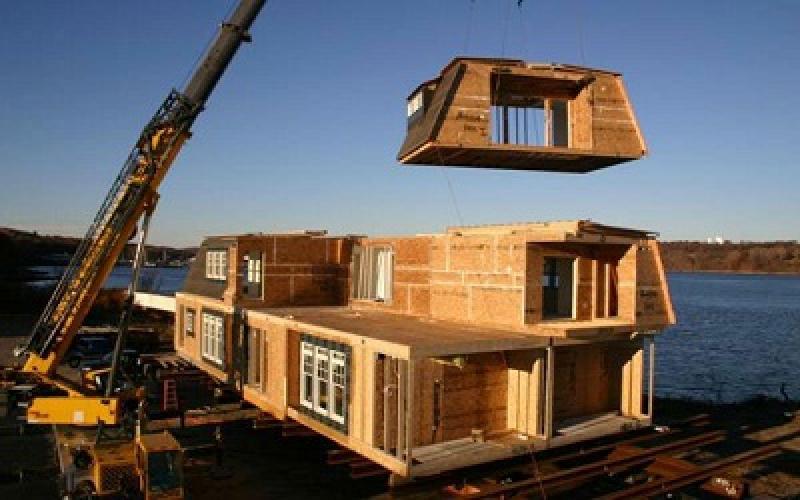Modular construction utilizes off-site manufacturing techniques to prefabricate whole building sections or modules in a factory setting that are then transported and assembled onsite. This article explores how modular building methods are changing the construction landscape.
What is Modular Construction?
An Overview of the Process
Modular construction refers to a process where building components or modules are manufactured off-site in a controlled factory environment rather than at the final building site. These prefabricated modules can include sections like bathrooms, kitchens, or even fully finished rooms that only need to be assembled together onsite.
The modular building process starts with a detailed design of the project that is then broken down into modules. Sections like walls, floors, and roofs are fabricated precisely in a factory alongside integrated electrical, plumbing and finishing work. High-tech manufacturing and automation allow for exact precision cutting and assembly of building materials indoors out of weather. Once completed, the modules are transported to the construction site where a crane is typically used to lift and connect the pieces together quickly. Interior finishing work, if needed, then completes the construction project.
Advantages of Modular Construction
Faster Timelines, Improved Quality and Cost Savings
One of the major benefits of Modular Construction is the significantly faster time to complete projects compared to traditional building methods. By performing the majority of construction work indoors in a controlled factory setting before assembling onsite, the overall timeline can be reduced by 30-50%.
Additionally, the process allows for improved quality control. Fabricating modules in a factory avoids issues caused by job site factors like weather delays. Tighter production standards and optimized workflows in the modular facility ensure consistent results and quality each time.
Modular building also offers cost savings opportunities. With projects moving more efficiently, overhead expenses are reduced. Factory conditions allow for lean construction techniques, less waste production and reuse of leftover materials. Assembly onsite is quicker with lower demand on labor and equipment needs. Overall, studies have shown modular projects to achieve 5-20% savings in total construction costs.
Applications Across Multiple Market Sectors
Given the ability to deliver fast, high-quality projects at reduced costs, modular construction has found use in numerous market sectors beyond just commercial and residential buildings:
Education – Modular classrooms provide school districts facing capacity issues an attractive temporary or permanent solution. They can be fabricated and installed rapidly to alleviate overcrowding.
Healthcare – Hospitals looking to expand bed capacity or outpatient services benefit from the swift construction times of modular wards, clinics, and surgery centers.
Post-Disaster Reconstruction – Following natural disasters, modular structures effectively house displaced families and deliver much needed temporary housing, medical clinics, and school facilities in months instead of years.
Offshore Energy – Modular designs are well-suited for remote oil rig quarters, offshore wind turbine gear houses, and other maritime energy facilities requiring rugged, transportable buildings.
Transportation – Transportation hubs are utilizing modular concepts for bus terminals, airport lounges, passenger stations with standardized, reconfigurable internal layouts suited for flexibility.
The role of modular construction is expanding across multiple sectors thanks to its time and cost effectiveness. As manufacturing techniques continue advancing, we can expect greater adoption in infrastructure, institutional facilities, and specialized industrial applications as well.
Expanding Modular Applications Beyond Buildings
While traditionally associated with buildings, modular techniques are now finding applications beyond structural architecture into manufactured components and assembled systems. Modular approaches allow for customizable, standardized products that deliver versatility.
Prefabrication is enabling entirely new modular product categories such as ready-made infinity pools constructed of interlocking modular pool walls, decks, filtration units and lighting systems for plug and play backyard installations.
Manufactured modular skids containing pre-wired, pre-plumbed and pre-tested industrial process equipment, mechanical rooms and electrical switchgear arrive on job sites as turnkey integrated systems.
Even complex infrastructure is going modular with prefabricated components for bridges, tunnels, cell towers and energy transmission structures. Entire sections such as bridge decks or tunnel segments are assembled off-site for rapid field connections.
As products and systems become increasingly high-tech, modular designs that leverage precision prefabrication will continue to make even large-scale engineered works feasible and easier to implement across a variety of sectors. Offsite manufacturing enables mass customization at an unprecedented scale.
Future Prospects
Going forward, advancements in building information modeling (BIM), 3D printing, robotics and smart automation are set to further enhance modular construction capabilities. Intelligent integrated designs and optimized digital workflows will deliver even more benefits for owners, developers, and contractors worldwide through continued cost reductions, superior quality assurance, and higher sustainability.
Ultimately, the future of construction is highly modular. With accelerated timelines, reduced risks and increased productivity, modular building methods have vast potential to revolutionize how the world is built in decades to come across residential, commercial and infrastructure sectors alike. As factory manufacturing and modular assembly technologies progress, expect these innovative processes to become increasingly mainstream in the global construction industry.
Note:
1. Source: Coherent Market Insights, Public sources, Desk research
2. We have leveraged AI tools to mine information and compile it




